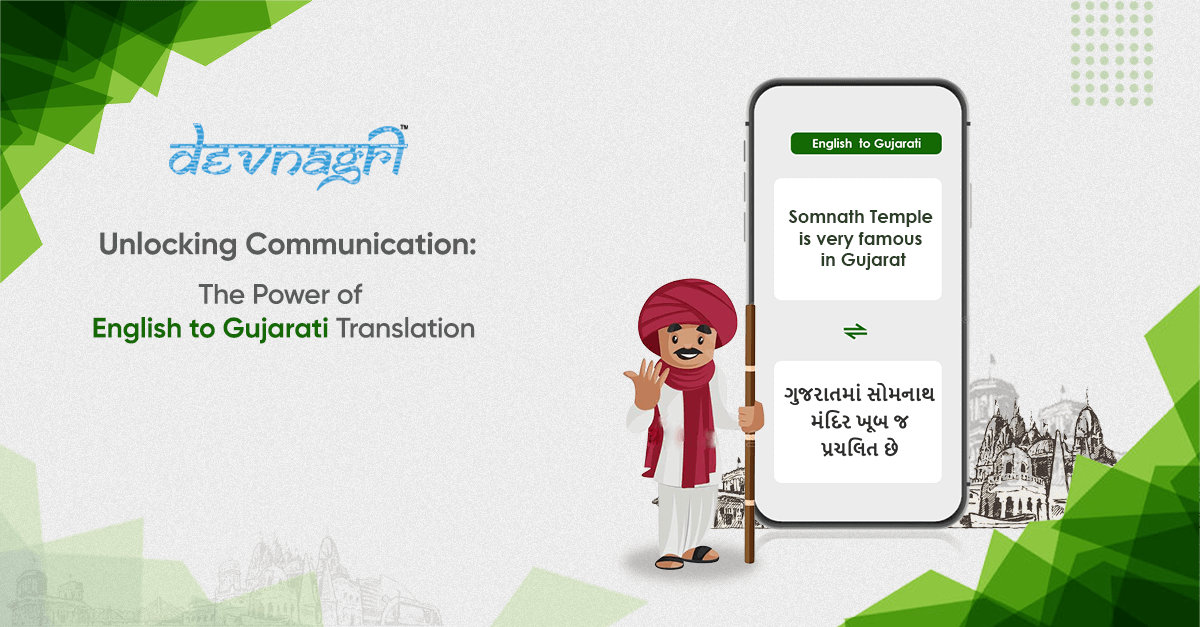
In our interconnected world, where global communication is the norm, the ability to bridge language barriers has become increasingly vital. Language serves as a medium for expressing ideas, sharing cultures, and fostering connections. However, with over 7,000 languages spoken worldwide, the diversity of linguistic backgrounds often poses challenges to effective communication. Among these languages is Gujarati, spoken by millions of people primarily in the Indian state of Gujarat and by diaspora communities around the globe.
English, as one of the most widely spoken languages globally, plays a pivotal role in international communication. Its prevalence in business, academia, technology, and entertainment makes it a lingua franca for many. However, for Gujarati speakers, navigating the vast sea of English content can be daunting without adequate translation resources. This is where English to Gujarati translation steps in, serving as a crucial tool for breaking down language barriers and fostering inclusivity.
Also Read: Navigating the Complexity of Legal Translation: Ensuring Accuracy and Clarity
The Importance of Translation:
Translation serves as a bridge between languages, allowing individuals to access information, ideas, and opportunities beyond their linguistic boundaries. In the context of English to Gujarati translation, this process enables Gujarati speakers to engage with a plethora of English-language content, ranging from literature and scientific research to news and entertainment.
One of the primary benefits of translation is the democratization of knowledge. By rendering English content into Gujarati, translation makes valuable information accessible to a broader audience. Whether it’s educational resources, legal documents, or medical information, translation empowers Gujarati speakers to obtain critical knowledge in their native language, eliminating barriers to understanding and participation.
Moreover, translation preserves cultural heritage and identity. Language is deeply intertwined with culture, and through translation, cultural nuances and expressions are retained, enriching the linguistic landscape. For Gujarati speakers, accessing content in their native language fosters a sense of belonging and pride in their heritage, reinforcing cultural bonds and preserving linguistic diversity.
Also Read: Bridging Cultures: The Importance of English to Tamil Translation
Challenges and Solutions:
While English to Gujarati translation offers immense benefits, it also presents unique challenges. Languages differ not only in vocabulary and grammar but also in cultural context and idiomatic expressions. Translating text requires more than just linguistic proficiency; it demands a deep understanding of both source and target cultures to convey the intended meaning accurately.
One common challenge in translation is maintaining fidelity to the original text while ensuring clarity and coherence in the translated version. Literal translations often fail to capture the nuances of language, leading to confusion or misinterpretation. Skilled translators employ techniques such as localization, where the translation is adapted to suit the cultural and linguistic norms of the target audience, ensuring accuracy without sacrificing readability.
Additionally, the rapid evolution of language, especially in domains like technology and science, poses a continuous challenge for translators. New terms, jargon, and expressions emerge regularly, requiring translators to stay updated and adapt their strategies accordingly. Collaborative efforts between linguists, subject matter experts, and technology developers can help address this challenge by developing glossaries, terminology databases, and translation tools tailored to specific domains.
Also Read: Breaking Language Barriers: The Power of a Website Translator
Leveraging Technology:
In recent years, technology has revolutionized the field of translation, offering powerful tools and resources to enhance efficiency and accuracy. Machine translation, powered by artificial intelligence, has made significant strides in translating text between English and Gujarati and other language pairs. While machine translation excels at processing large volumes of text quickly, its output may lack the finesse and cultural sensitivity of human translation.
However, combining machine translation with human expertise can yield optimal results. This approach, known as machine-assisted translation or computer-aided translation, harnesses the strengths of both human translators and machine algorithms. Translators can use machine-generated translations as a starting point, refining and polishing the text to ensure linguistic accuracy and cultural appropriateness.
Moreover, technology facilitates collaboration and communication among translators, enabling seamless workflows and quality assurance mechanisms. Translation management systems allow multiple translators to work on the same project simultaneously, streamlining the translation process and ensuring consistency across documents.
Also Read: Exploring the Nuances of English to Hindi Translation: Bridging Cultural and Linguistic Divides
Conclusion:
English to Gujarati translation serves as a gateway to knowledge, enabling Gujarati speakers to access a wealth of information and opportunities in their native language. By breaking down language barriers, translation promotes inclusivity, fosters cultural exchange, and facilitates global communication.
While translation presents challenges, advancements in technology and collaborative approaches offer solutions to overcome these obstacles. By leveraging the power of human expertise and artificial intelligence, translators can deliver high-quality translations that preserve the integrity of the original text while catering to the linguistic and cultural needs of the target audience.
As our world continues to become more interconnected, the role of translation in bridging linguistic divides becomes increasingly crucial. English to Gujarati translation is not just about converting words; it’s about unlocking doors to understanding, empathy, and collaboration across diverse cultures and communities. In this ever-changing landscape, the ability to communicate across languages remains one of humanity’s most valuable assets, transcending borders and enriching lives.





